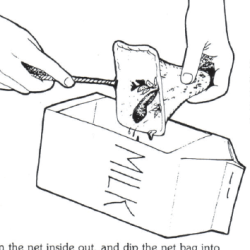Source Institutions
Source Institutions
Add to list Go to activity
Activity link broken? See if it's at the internet archive

Dig a hole, line it, fill it with fresh water, and you have a water hole: a good place to study colonization. In this outdoor activity, learners create a controlled experiment to study the effects of fertilizer on colonization. Learners create two water holes, one of which uses fertilizer as a variable. Through regular visits to the water holes over the course of eight to ten weeks, learners observe and compare changes. In the process, learner gain a better understanding of the scientific method.
- 1 to 12 months
- $5 - $10 per group of students
- Ages 8 - 18
- Activity, Experiment/Lab Activity
- English
Quick Guide
Materials List (per group of students)
- hoes
- shovels
- 2 children's wading pools OR plastic sheeting
- burlap
- duct tape or string
- hoses or buckets
- lawn fertilizer
- 2 data boards
- colored marking pencils
- observation aids (bug boxes or hand lenses, clear plastic cups, spoons, aquarium nets, etc.)
- 1 thermometer
- 30 cm rulers or meter sticks
- copies of OBIS Pond Guide
Subjects
-
Life Sciences
-
Diversity of Life
- Plants
- Animals
-
Ecology
- Ecosystems
- Populations
-
Diversity of Life
-
The Nature of Science
- The Scientific Process
Informal Categories
- Animals
- Nature and Environment
- Outdoor Activity
- Physical Activity
Audience
To use this activity, learners need to:
- see
- be mobile
- touch
Learning styles supported:
- Involves teamwork and communication skills
- Involves hands-on or lab activities
Other
This resource is part of:
Access Rights:
- Free access
By:
Rights:
- All rights reserved, The Regents of the University of California, 1979
